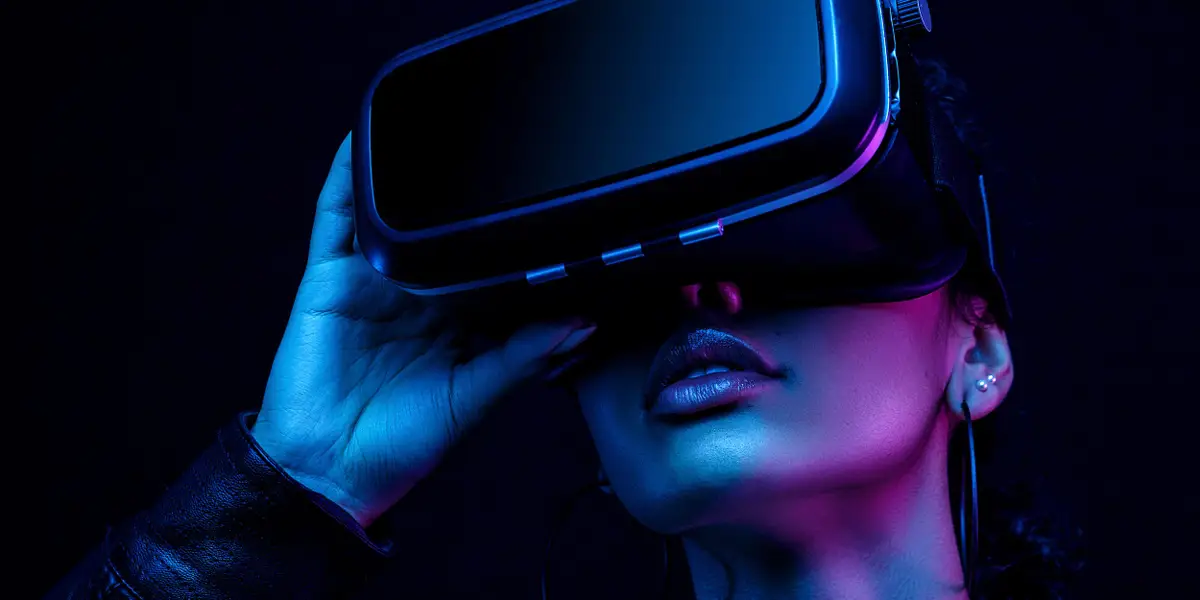Immersive Gaming: Reviews of VR and AR Experiences!
In the realm of gaming, immersive experiences have taken center stage with the advent of Virtual Reality (VR) and Augmented Reality (AR) technologies. These advancements have revolutionized how we interact with digital content, blurring the lines between the virtual and physical worlds. This article delves into the captivating world of immersive gaming, offering insights into both VR and AR experiences, along with reviews of popular titles and applications.
Understanding Virtual Reality (VR)
What is VR?
Virtual Reality (VR) refers to a simulated environment that immerses users into a computer-generated reality, typically experienced through specialized headsets or goggles. These environments are designed to replicate real-world settings or fantasy realms, allowing users to interact with digital objects and characters.
How Does VR Work?
VR technology utilizes a combination of hardware and software components to create immersive experiences. Head-mounted displays (HMDs) deliver stereoscopic visuals to each eye, creating a sense of depth and presence. Motion tracking sensors detect movements, enabling users to explore virtual environments and interact with objects.
Popular VR Platforms and Devices
Leading VR platforms include Oculus Rift, HTC Vive, PlayStation VR, and Valve Index. Each platform offers a unique set of features and experiences, catering to different preferences and budgets.
Exploring Augmented Reality (AR)
What is AR?
Augmented Reality (AR) overlays digital content onto the real world, enhancing the user’s perception of their environment. Unlike VR, AR does not replace the physical world but instead adds virtual elements to it, seamlessly blending digital and physical realities.
How Does AR Work?
AR technology relies on cameras and sensors to identify real-world objects and surfaces. Digital information is then superimposed onto these surfaces, visible through AR-enabled devices such as smartphones, tablets, and smart glasses.
Examples of AR Applications
AR has found applications in various industries, including gaming, education, healthcare, and retail. Popular AR apps include Pokémon GO, IKEA Place, and Snapchat’s AR filters, demonstrating the versatility and potential of this technology.
Benefits of Immersive Gaming
Immersive gaming offers a myriad of benefits beyond entertainment:
Enhanced Realism and Engagement
VR and AR experiences transport users to virtual worlds filled with rich detail and interactivity, fostering deeper engagement and emotional immersion.
Therapeutic Applications
VR has been utilized in therapeutic settings, such as exposure therapy for phobias, pain management, and rehabilitation exercises. AR has also shown promise in enhancing learning experiences for individuals with special needs.
Educational Opportunities
Immersive gaming provides valuable educational opportunities, allowing users to explore historical landmarks, conduct virtual experiments, and engage in interactive simulations.
Reviews of VR Experiences

Game Titles and Experiences
Popular VR titles include Beat Saber, Half-Life: Alyx, and The Walking Dead: Saints & Sinners. These games offer immersive gameplay experiences, innovative mechanics, and stunning visuals.
User Experiences and Feedback
Players praise VR games for their immersive storytelling, intuitive controls, and adrenaline-pumping action. However, some users criticize certain titles for motion sickness and limited replay value.
Performance and Graphics Quality
VR experiences vary in performance and graphics quality depending on the hardware specifications and optimization efforts. High-end VR headsets deliver smoother frame rates and sharper visuals compared to budget-friendly alternatives.
Reviews of AR Experiences
AR Apps and Experiences
Popular AR apps span various categories, including gaming, productivity, and social media. Snapchat’s AR filters, Pokémon GO, and Google Maps’ AR navigation feature are among the most widely used applications.
User Feedback and Ratings
Users appreciate the convenience and novelty of AR applications, with many enjoying interactive experiences and creative features. However, concerns regarding privacy, battery consumption, and device compatibility have been raised.
Practical Applications of AR
AR technology has practical applications in fields such as architecture, interior design, and retail. Businesses leverage AR to showcase products, visualize designs, and enhance customer engagement.
Comparison Between VR and AR

Advantages and Disadvantages of Each
VR excels in providing fully immersive experiences, making it ideal for gaming and entertainment. However, VR requires dedicated hardware and may induce motion sickness in some users. In contrast, AR offers a more accessible and versatile experience, seamlessly integrating digital content into the real world. However, AR experiences may be less immersive compared to VR, relying on the user’s surroundings for context.
Market Trends and Future Projections
The VR and AR market is poised for significant growth, driven by advancements in technology and increasing consumer interest. Industry experts predict a surge in demand for immersive experiences across gaming, education, healthcare, and enterprise applications.
Growth of Mobile AR
Mobile AR is expected to drive significant growth in the immersive gaming market. With the widespread adoption of smartphones and tablets, AR apps accessible to a broader audience. The convenience of mobile AR apps, coupled with advancements in AR technology and hardware, will fuel market expansion.
Integration of AI and Machine Learning
The integration of AI and machine learning algorithms into immersive gaming experiences will enhance realism and interactivity. AI-driven NPCs (non-player characters) will offer more dynamic and personalized interactions, adapting to players’ behavior and preferences. This innovation will lead to deeper immersion and more engaging gameplay.
Expansion of Location-Based VR
Location-based VR entertainment venues are gaining traction, offering consumers unique and immersive experiences beyond traditional gaming. These venues feature state-of-the-art VR technology and interactive attractions, attracting both gamers and non-gamers alike. As the demand for immersive experiences grows, we can expect to see the proliferation of location-based VR arcades and entertainment centers.
Conclusion
Immersive gaming continues to captivate audiences worldwide, offering unparalleled experiences that blur the boundaries between reality and imagination. Whether diving into virtual worlds with VR or augmenting everyday life with AR, the possibilities are endless. As technology continues to evolve, immersive gaming will undoubtedly shape the future of entertainment, education, and beyond


